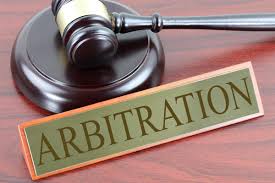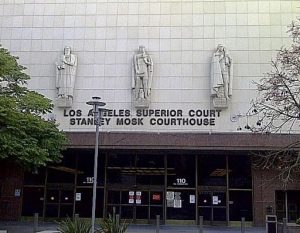By Nicholas Grether, Esq., The Maloney Firm, APC

Note: This article was posted on June 18, 2020 at 10:30 PDT. Because the COVID-19 situation is rapidly changing as the federal government and State of California continue to fight this pandemic, individuals and businesses should consult with their counsel for the latest developments and updated guidance on this topic.
.
As California continues to reopen, many businesses are faced with the question of how to do so safely for employees and customers. Guidance from Governor Gavin Newsom explains that counties will have to meet certain benchmarks regarding testing and hospitalizations to reopen lower-risk businesses. The individual counties will then request permission from the State of California (“California” or “State”) to reopen additional businesses. For example, Los Angeles County is in Stage 2, where offices and lower-risk workplaces, such as retail and manufacturing, are permitted to reopen. These businesses need to have a policy prepared to ensure equitable treatment of their employees and to make reopening as safe as possible. The businesses that will hopefully be able to reopen in Stage 3 should take this time to make sure they are ready to reopen.
.
Confirm Your Business is Using the Right Information
.
The State has been providing statistical benchmarks for the reopening of certain businesses as we move through various stages of reopening. Lower-risk workplaces were able to reopen in Stage 2 and higher-risk workplaces are in the process of reopening in Stage 3 (to begin with limited personal care and recreational venues with workplace modifications). California’s plan is to only end the Stay-At-Home order once COVID-19 therapeutics have been developed. This means businesses should be prepared to deal with these restrictions for the foreseeable future. However, be aware that cities and counties are permitted to adopt more restrictive orders than the State.
.
Make sure your business is complying with the appropriate order. This will depend on the location of your business, and can be confusing where the State, county, and city have issued various restrictions and guidelines. For example, if your business is located in Long Breach but your employees live in Orange County, your business will be required to comply with orders from the City of Long Beach, County of Los Angeles, and State of California. For businesses with multiple locations, each site will have to comply with the rules applicable to its respective city and county.
.
Use Your Common Sense
.
Many workplaces adhere to a rule something to the tune of, “If you feel sick, don’t come into the office or go home.” This needs to be stressed by the employer and adhered to by employees. As more businesses reopen and employees come into contact with more persons, the easiest way to prevent the spread of COVID-19 is to keep your sick employees away from the healthy ones. At this time, it is probably best to eliminate common touch and gathering points such as a shared coffee maker. On the other hand, devices like a touchless water dispenser could be safe to use if sanitized frequently.
.
Working from Home/Teleworking
.
If your operations allow, continue to let employees to work from home. Some county and city officials have advised that employees should continue to work from home even if the business has reopened. For example, Orange County is allowing offices to reopen only where working from home is impossible, and Los Angeles County is strongly encouraging employees to continue working from home as long as they can.
.
As businesses reopen, make any determinations about who can work from home based on your business needs. Do not use factors such as age or medical condition/disability that may subject your business to liability for discrimination. If, on the other hand, an employee is sick or experiencing symptoms of COVID-19, you may direct that employee to work from home or stay out of the workplace. While COVID-19 is considered a pandemic by the Centers for Disease Control (“CDC”) or other governmental health authority, an employee exhibiting symptoms may be sent home because they are considered a “direct threat.”
.
Where an employee has a medical condition/disability that makes him or her more likely to have a severe case of COVID-19, allowing work from home may be required as an accommodation. Also note that if your employees have been working from home already, it will be more difficult to deny those employees’ requests to work from home. If an employee requests to work from home as a result of their medical condition/disability, engage in an interactive process by meeting with the employee, their supervisor, and Human Resources to discuss the employee’s work responsibilities and what is needed for the accommodation. If working from home is possible with reasonable expense, it will likely be considered a reasonable accommodation that must be provided to employees with medical conditions/disabilities. Be careful not avoid these conversations with your employees—open and honest communication will help in the long run.
.
Protect Your Employees and Customers
.
Ensuring the availability of personal protective equipment (“PPE”) will help employees and customers stay as safe as possible. You may need to rearrange your workplace to allow employees to maintain 6 feet (or more) of separation while working. If employees need to be within 6 feet at times, make sure to provide sufficient PPE so that they can be safe as possible. Studies from Korea and Japan have shown that the likelihood of indoor transmission is higher the more people are speaking. For that reason, in-person meetings should be limited. As one of the success stories thus far, Korea advised its businesses that meetings should be “fewer, smaller, shorter.” Open windows if possible, since it has also been shown that air conditioning vents may carry COVID-19 droplets further. Some business may not be able to safely operate due to their nature. For example, a business like a call center cannot prevent the spread of COVID-19 if it operates with small distances between workers who are constantly talking.
.
Your business will also need to take additional precautions for customers entering the business. If possible, try to set up a “traffic flow” system with a designated entrance and exit so that customers move in one direction instead of crossing paths repeatedly. Take chairs out of conference rooms so that all attendees can maintain 6 feet of distance. Open windows and install clear barriers where appropriate to provide even more protection. You’ve likely seen these plastic screens when checking out at the grocery store recently. Your workplace and business needs will need to adapt to the particular circumstances imposed by your workforce and architecture. Additional guidance is available from the Centers for Disease Control. https://www.cdc.gov/coronavirus/2019-ncov/index.html
.
Create Procedures to Help Slow the Spread
.
Develop a cleaning and sanitization procedure. Your landlord or building manager should have created some protocols, but you must make sure that necessary cleaning is done within your office or business. Provide disinfectant wipes, hand sanitizer, and face masks. Remember that if you choose to require employees to wear face masks (or the government requires it) while at the workplace, these should be provided at the employer’s expense. You may choose to reimburse employees for purchasing masks, but we recommend providing them to avoid additional reimbursement requests.
.
Check your insurance policies and contact your insurance broker to see if COVID-19 claims by visitors/customers will be covered. If your insurance does not cover claims by visitors/customers, establishing set protocols will be necessary to avoid claims of negligence if a visitor or customer contracts COVID-19.
.
Each of the procedures and practices created in order to reopen should be written and incorporated into a new version of the company handbook or become a COVID-19 addendum that is signed by each employee. Also, many of the federal and state laws passed in response to COVID-19 require specific notices be displayed in places of business; these posting rules must be strictly followed. Local governments and industry groups may provide specific restrictions and guidelines to follow for your industry. Most government health agencies also provide specific materials to post and distribute amongst your workforce.
.
However, your business must be aware that it has a responsibility to keep your employees and customers safe. Developing safety protocols and procedures now may result in some short-term losses, but healthy employees and customers are more valuable. Now is also a good time to evaluate your business as a whole. The pandemic may end up having a profound change on business as many industries are adapting to working from home. Businesses should be prepared to confront these new realities even as we get closer to a return to normalcy.
.
If you have questions regarding this article, contact The Maloney Firm at 310.540.1505.














